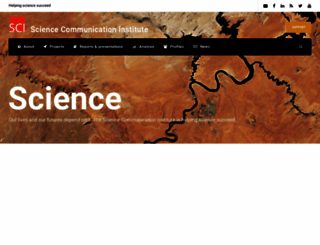Science Communication Institute | Helping science succeed
Page Load Speed
1.3 sec in total
First Response
56 ms
Resources Loaded
1 sec
Page Rendered
252 ms

About Website
Visit nationalscience.org now to see the best up-to-date National Science content and also check out these interesting facts you probably never knew about nationalscience.org
SCI’s mission is to improve science collaboration, discovery, education and public policy by improving the culture of communication inside science.
Visit nationalscience.orgKey Findings
We analyzed Nationalscience.org page load time and found that the first response time was 56 ms and then it took 1.3 sec to load all DOM resources and completely render a web page. This is quite a good result, as only 25% of websites can load faster.